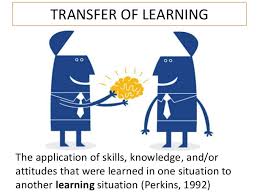Pytorch implementation of Fine-Tuning (Transfer Learning) CNN Networks. This project is made by Bumsoo Kim.
Korea University, Master-Ph.D intergrated Course.
In practice, very few people train an entire Convolutional Network from scratch (with random initialization), because it is relatively rare to have a dataset of sufficient size. Instead, it is common to pretrain a ConvNet on a very large dataset (e.g. ImageNet, which contains 1.2 million images with 1000 categories), and then use the ConvNet either as an initialization or a fixed feature extractor for the task of interest.
Futher explanations can be found here.
See the installation instruction for a step-by-step installation guide. See the server instruction for server settup.
- Install cuda-8.0
- Install cudnn v5.1
- Download PyTorch for python-2.7 and clone the repository.
- Download PyTorch-3.5 for using further pretrained libraries with anaconda3.
pip install http://download.pytorch.org/whl/cu80/torch-0.1.12.post2-cp27-none-linux_x86_64.whl
pip install torchvision
git clone https://github.com/meliketoy/resnet-fine-tuning.pytorch- Download Pretrained models for PyTorch (Only for 3.5)
$ git clone https://github.com/Cadene/pretrained-models.pytorch.git
$ pretrained-models.pytorch
$ python setup.py installAfter you have cloned this repository into your file system, open config.py, And edit the lines below to your data directory.
data_base = [:dir to your original dataset]
aug_base = [:dir to your actually trained dataset]For training, your data file system should be in the following hierarchy. Organizing codes for your data into the given requirements will be provided here
[:data file name]
|-train
|-[:class 0]
|-[:class 1]
|-[:class 2]
...
|-[:class n]
|-val
|-[:class 0]
|-[:class 1]
|-[:class 2]
...
|-[:class n]After you have cloned the repository, you can train the dataset by running the script below.
You can set the dimension of the additional layer in config.py
The resetClassifier option will automatically detect the number of classes in your data folder and reset the last classifier layer to the according number.
# zero-base training
python main.py --lr [:lr] --depth [:depth] --resetClassifier
# fine-tuning
python main.py --finetune --lr [:lr] --depth [:depth]
# fine-tuning with additional linear layers
python main.py --finetune --addlayer --lr [:lr] --depth [:depth]I have added fine-tuning & transfer learning script for alexnet, VGG(11, 13, 16, 19), ResNet(18, 34, 50, 101, 152).
Please modify the scripts and run the line below.
$ ./train/[:network].sh
# For example, if you want to pretrain alexnet, just run
$ ./train/alexnet.sh
For testing out your fine-tuned model on alexnet, VGG(11, 13, 16, 19), ResNet(18, 34, 50, 101, 152),
First, set your data directory as test_dir in config.py.
Please modify the scripts and run the line below.
$ ./test/[:network].sh
For example, if you have trained ResNet with 50 layers, first modify the resnet test script
$ vi ./test/resnet.sh
python main.py \
--net_type resnet \
--depth 50
--testOnly
$ ./test/resnet.sh
The code above will automatically download weights from the given depth data, and train your dataset with a very small learning rate.
For various training mechanisms, extracted feature vectors are needed.
This repository will provide you not only feature extraction from pre-trained networks,
but also extractions from a model that was trained by yourself.
Just set the test directory in the config.py and run the code below.
python extract_features.pyThis will automatically create pickles in a newly created 'vector' directory,
which will contain dictionary pickles which contains the below.
Currently, the 'score' will only cover 0~1 scores for binary classes.
Confidence scores for multiple class will be updated afterwards.
pickle_file [name : image base name]
|- 'file_name' : file name of the test image
|- 'features' : extracted feature vector
|- 'score' : Score for binary classificationEnjoy :-)

